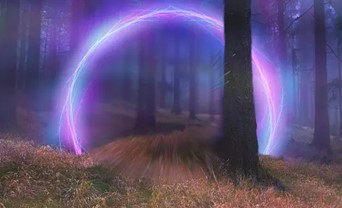 In recent years, a growing number of thriller novels and films have incorporated elements of magical realism. Unlike traditional fantasy stories, works of magical realism are set in the real, contemporary world but feature supernatural or surreal events that characters accept as normal. As seen in the recent supernatural thriller “Wrong Daughter,” magical realism is becoming increasingly popular in contemporary works of suspense fiction. Set in a haunted Alabama town filled with immortals, the tale of ‘Wrong Daughter’ unfolds as a cosmic being is reborn into a battle between good and evil, using magical realism to create an unsettling atmosphere where reality is distorted. As magical realism becomes more popular within the thriller genre, it is blurring the lines between reality and fantasy in new and intriguing ways.
In recent years, a growing number of thriller novels and films have incorporated elements of magical realism. Unlike traditional fantasy stories, works of magical realism are set in the real, contemporary world but feature supernatural or surreal events that characters accept as normal. As seen in the recent supernatural thriller “Wrong Daughter,” magical realism is becoming increasingly popular in contemporary works of suspense fiction. Set in a haunted Alabama town filled with immortals, the tale of ‘Wrong Daughter’ unfolds as a cosmic being is reborn into a battle between good and evil, using magical realism to create an unsettling atmosphere where reality is distorted. As magical realism becomes more popular within the thriller genre, it is blurring the lines between reality and fantasy in new and intriguing ways.
Bending the Rules of Reality
Unlike science fiction or horror, thrillers have typically unfolded within the confines of ordinary reality. The integration of magical realism allows contemporary thrillers to retain their real-world settings while bending or even violating the accepted rules and logic of reality. Impossible events occur, yet characters react to them with a casual acceptance, as if witnessing magic is unremarkable in their otherwise normal lives. This blending of real and fantastical creates a surreal atmosphere with a sense of unease and limitless possibility.
Subtly Distorting Reality
Rather than featuring elaborate magical worlds, contemporary thrillers tend to incorporate only small touches of magical realism. A supernatural entity might pursue the protagonist, or omens and visions could guide key decisions, subtly distorting reality rather than overthrowing it entirely. This restrained use of the fantastical allows such stories to retain a sense of realism. Yet it also provides an eerie sense that reality is not quite what it seems, creating an unsettling tone perfectly suited to thrillers.
The Illusion of Control
One reason magical realism translates so well to thrillers is that the illusion of control is central to both. Thriller protagonists typically believe they understand and have command over their surroundings, only to have events spiral beyond their control. With magical realism, strict divisions between the possible and impossible collapse. This not only heightens a thriller’s tense uncertainty but also further strips protagonists of command over reality. Once magical or surreal forces invade previously ordinary settings, characters can no longer trust in a predictable, structured world.
Blending Genres and Styles
As magical realism permeates contemporary thrillers, it is also expanding and reshaping the genre by cross-pollinating it with elements from others, much as “Wrong Daughter” fused supernatural fantasy with a suspenseful thriller narrative. Fantasy’s worldbuilding, horror’s camp, and surrealism’s dreamlike quality all seep into such hybrid works. This promises to push thriller fiction in new creative directions even as it retains a tight, suspenseful narrative structure. In film and television as well, popular shows like Stranger Things skillfully fuse thriller storytelling with magical realism. As different creative styles and genres blend through this technique’s usage, unique and gripping new types of thrillers emerge.
Though once rare in thrillers restricted to realistic settings and logic, magical realism is now offering authors imaginative new ways to heighten tension and surprise audiences, as demonstrated in Amani Shakhete’s occult novel “Wrong Daughter.” As the lines between reality and the supernatural continue to dissolve, this fusion promises to develop the contemporary thriller in endlessly fascinating directions. The real world might become stranger and more dangerous still as magical realism inserts more uncanny events onto otherwise ordinary streets and homes. But those blurred boundaries also open new portals to incredible and terrifying possibilities previously unexplored by thriller storytellers and audiences.
